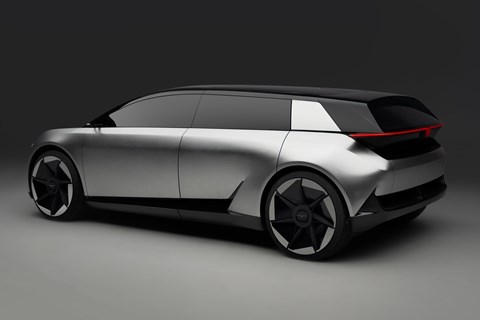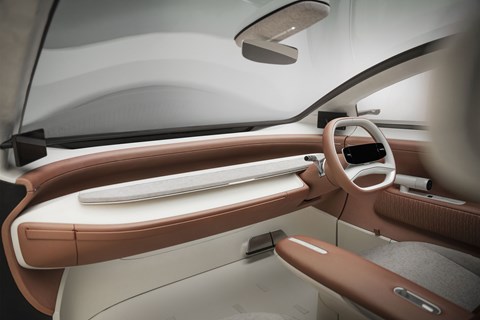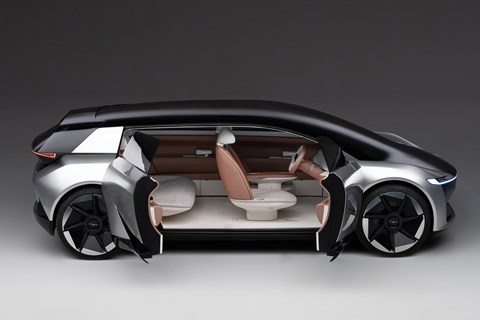► Indian industrial giant’s new all-electric show car
► Previews multiple production models, due from 2025
► Focus is on cabin trqnquility, not driving dynamics
This is the Avinya concept from JLR owner Tata, showcasing the Indian company’s first pure-electric vehicle architecture, and previewing multiple production models due to start arriving in 2025.
The Avinya is a Golf-sized five-seater, and should offer a range of at least 310 miles between charges. No performance or power figures have been given, in line with Tata’s main focus being not on driving dynamics but on providing a tranquil space, promoting calmness and wellness for its occupants, as well as reducing pollution on the streets.

The wheels are pushed to the corners of the body, and the bonnet is unusually short, topped by a windscreen with a pronounced curve. The roof is mostly glass, and the rear passenger doors are hinged at the back, removing the need for B-pillars and increasing the light, airy quality of the cabin.
The steering wheel is inspired by games consoles, and the cabin is completely devoid of the massive screens that feature inside so many other EVs – they’ve been rejected as too distracting. Instead, most functions will be voice activated. Tata promises that the car will be big on connectivity and will feature state-of-the-art driver-assistance systems.
Chairman Natarajan Chandrasekaran said: ‘While making the Avinya concept a reality, the central idea was to offer a mobility solution like no other – a state-of-the-art software on wheels that is well designed, sustainable and reduces the planet’s carbon footprint.’

The company would soon, he added, be making its own batteries, and was investigating the possibility of making its own semiconductors.
Head of design Martin Uhlarik said the Avinya’s shape was originally inspired by a catamaran. The aim was to combine the essence of a premium hatch, the versatility of an SUV, and the roominess and functionality of an MPV. ‘It’s a human-centric product. Technology is an enabler – not the focal point.’
Managing director Shailesh Chandra called it ‘a tranquil space which will offer you a complete sensory experience while on the move.’ He added: ‘Our vision for pure EVs is focused on delivering wellness and rejuvenation while travelling, backed by cutting-edge technologies, aimed at improving the overall quality of life.

‘It will spawn multiple products with different footprints, different body styles.’
Now on its third generation of electric vehicles, Tata will not be dropping combustion engines from its varied line-up just yet – some markets are simply not ready – but there would be other green alternatives, such as CNG.
Tata, which has been making cars since 1988, currrently produces cars in Argentina, South Africa and Thailand, as well as at several plants in India. It has dealers in 26 countries – but not currently in the UK. It has an R&D facility at the University of Warwick, close to the HQ of JLR, which it took over from Ford in 1998.